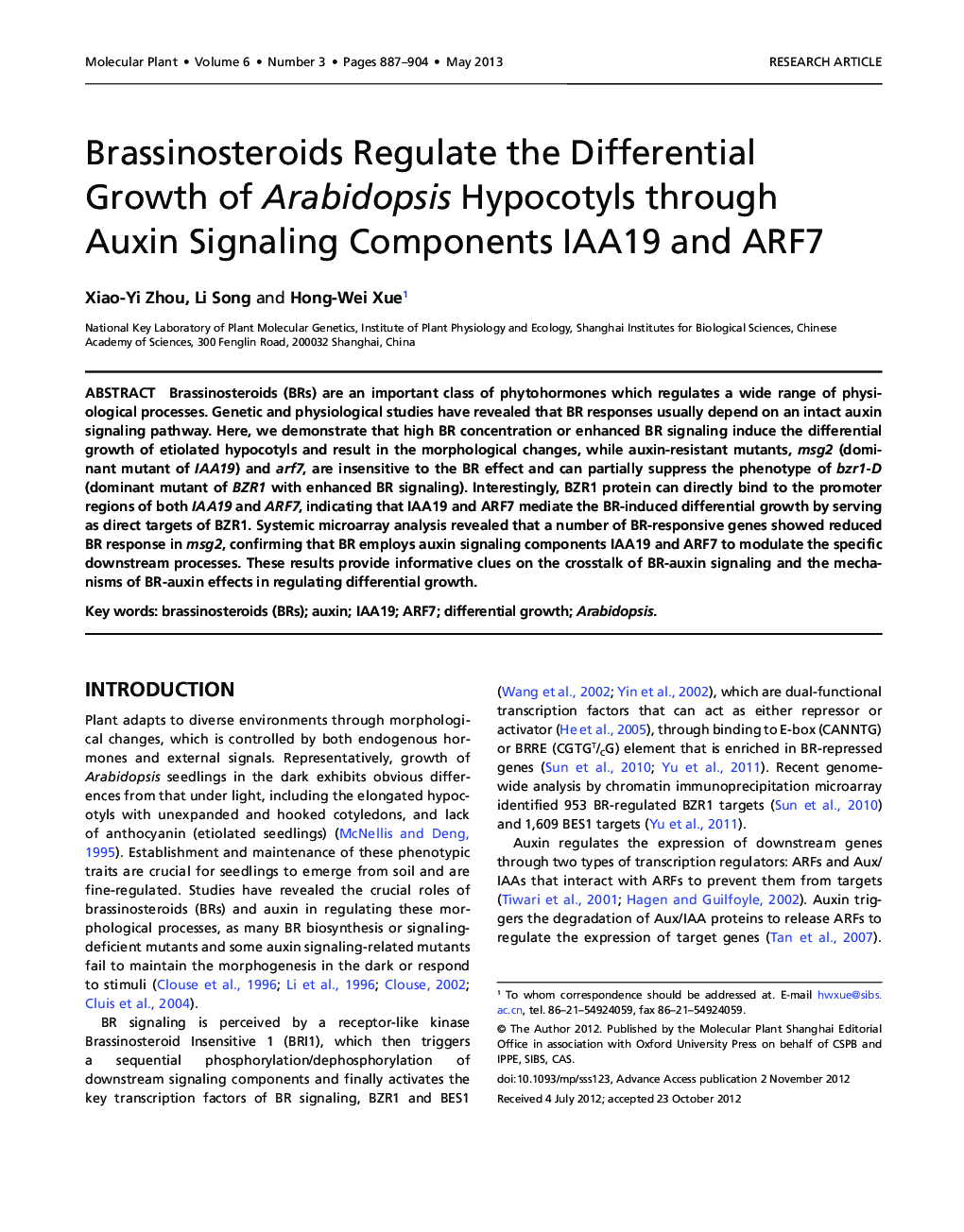| Article ID | Journal | Published Year | Pages | File Type |
|---|---|---|---|---|
| 4570337 | Molecular Plant | 2013 | 18 Pages |
ABSTRACTBrassinosteroids (BRs) are an important class of phytohormones which regulates a wide range of physiological processes. Genetic and physiological studies have revealed that BR responses usually depend on an intact auxin signaling pathway. Here, we demonstrate that high BR concentration or enhanced BR signaling induce the differential growth of etiolated hypocotyls and result in the morphological changes, while auxin-resistant mutants, msg2 (dominant mutant of IAA19) and arf7, are insensitive to the BR effect and can partially suppress the phenotype of bzr1-D (dominant mutant of BZR1 with enhanced BR signaling). Interestingly, BZR1 protein can directly bind to the promoter regions of both IAA19 and ARF7, indicating that IAA19 and ARF7 mediate the BR-induced differential growth by serving as direct targets of BZR1. Systemic microarray analysis revealed that a number of BR-responsive genes showed reduced BR response in msg2, confirming that BR employs auxin signaling components IAA19 and ARF7 to modulate the specific downstream processes. These results provide informative clues on the crosstalk of BR-auxin signaling and the mechanisms of BR-auxin effects in regulating differential growth.SUMMARYBrassinosteroids (BRs) induce the differential growth of etiolated hypocotyls and result in the morphological changes, which is mediated by IAA19 and ARF7, two important components of auxin signaling, through direct regulation of BZR1
